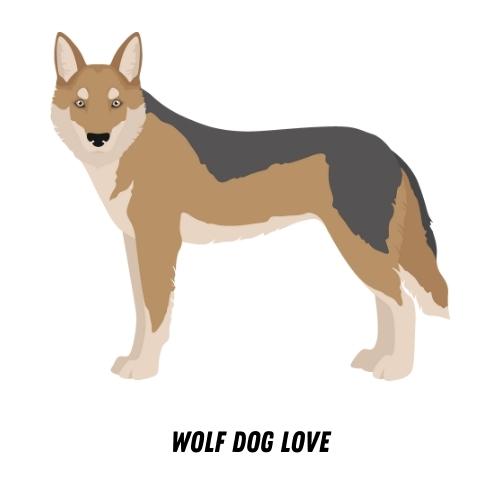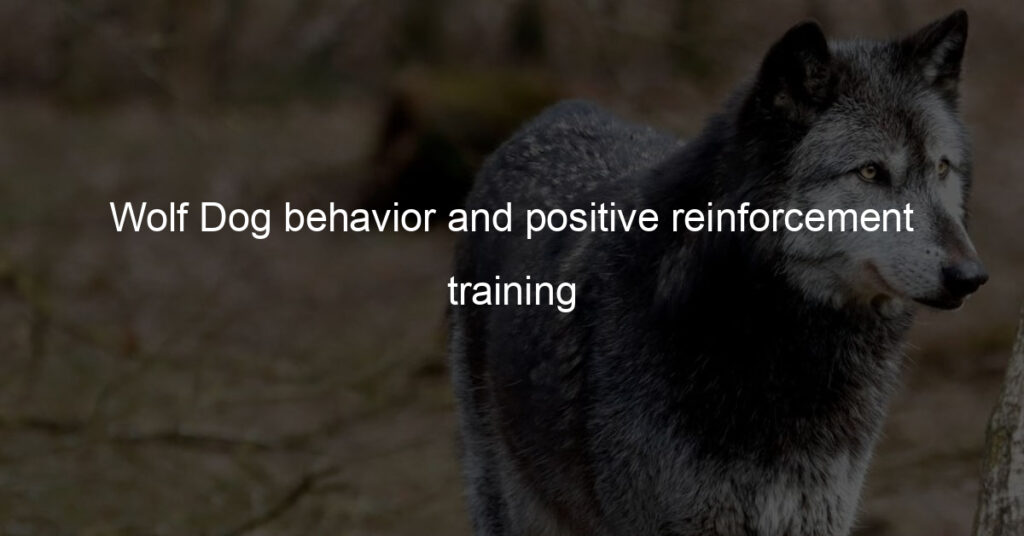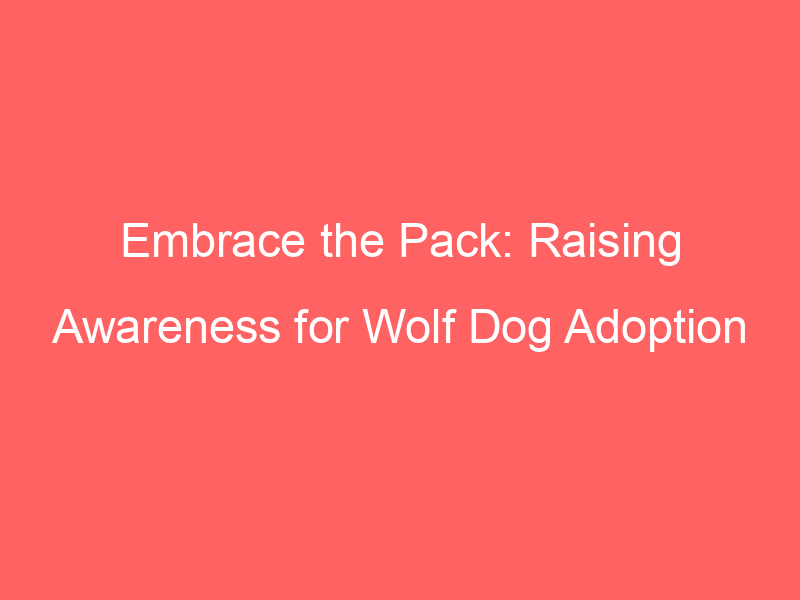Are you a proud owner of a wolf-dog? While these animals come with their own unique set of needs, this can be part of what makes having one so much fun! As with all dogs, wolf dogs benefit from positive reinforcement training. Training your pup not only helps them understand expectations but also strengthens the bond between you and your furry friend.
In this blog post, we will go over some key points for understanding and positively training your wolf dog. Get ready to learn about improving communication between you and your pet as well as tips for setting up rewards-based activities that promote desired behaviors.
Can wolfdogs be trained to be guard dogs?
When it comes to guarding dogs, most people think about German Shepherds or Rottweilers. But did you know that some people train their pets which are a hybrid of wolves and dogs to serve this purpose? These animals, also known as wolfdogs, actually offer specific benefits when used as guard dogs.
They are naturally more vigilant than many traditional breeds – having retained some of their wilder instincts – allowing them to better detect potential threats before they come too close. Despite the concerns around owning such an animal, responsible owners have successfully trained wolfdogs to be guard dogs that deter intruders while being gentle companions within the home. With the right amount of socialization and owner guidance, this breed can be a great option for guard work.
How do you train a high-content wolf-dog?
Training a high-content wolf-dog can appear daunting, however with the right attitude, tips, and tricks it doesn’t have to be so difficult. A great place to start is by emphasizing the use of reward-based training rather than punishment.
It’s important to create a relationship that is based on mutual respect and trust, which can easily be achieved by breaking down tasks into achievable increments. Additionally, as Wolf Dogs are highly intelligent creatures, it’s advisable to keep up the novelty factor; try playing games like hide-and-seek and use interactive toys during playtime.
Consistency is also key, as regular reinforcement helps the Wolf Dog build strong behaviors that will stick in the long run – this applies to walking too! Further tips include keeping an embellished sense of calm when dealing with your Wolf Dog and having realistic expectations, as these behavior patterns can take time to master.
Can you train a dog with only positive reinforcement?
Training a dog with only positive reinforcement is possible! Most research suggests that it’s the most effective way of training since the dog can associate a behavior with the reward and repeat it.
Of course, this doesn’t mean that you shouldn’t use negative feedback in some situations – it just means using more positive reinforcement than punishment. Positive reinforcement techniques come in many forms, such as praising and rewarding your pet with food, toys, or playtime when they do something good.
Additionally, by giving clear commands such as “sit” or “stay” and providing them with proper training sessions, your pup will learn the appropriate behavior quickly and form stronger bonds with their owners. So go ahead and give positive reinforcement a try – you’ll be amazed at how well it works for your furry friend!
What is an example of positive reinforcement in dog training?
Positive reinforcement is an extremely popular and effective way of training dogs. It involves rewarding good behavior with something the dog enjoys like a delicious treat, verbal praise, or even physical affection.
For instance, when teaching a puppy to sit, one could reward him every time he follows the command. Eventually, the pup will develop a good habit as it learns that sitting on cue will garner positive reinforcement.
This form of conditioning is especially effective in subduing bad behaviors; if your pup tends to jump up on guests when they enter the house, you can reward it for not jumping each time someone enters. Positive reinforcement helps reinforce desirable behaviors and establishes trust between the pet and the owner.
Conclusion: Wolf Dog behavior and positive reinforcement training
In conclusion, wolf-dog behavior can vary greatly depending on their background and personality. While shy wolf dogs may require more time to bond with owners and learn new commands, those with a strong prey drive may struggle more when it comes to obedience.
The key to a successful relationship between owners and their wolf-dog companions is understanding the breed-specific characteristics that influence their agility, loyalty, intelligence, and balance. By recognizing the uniqueness of these animals and providing them with ample positive reinforcement training opportunities, they can gain the confidence they need to make great furry family members.
With patience and dedication, owners can develop strong bonds with their wolf-dog companions and help them reach their full potential in both obedience and building trust.








